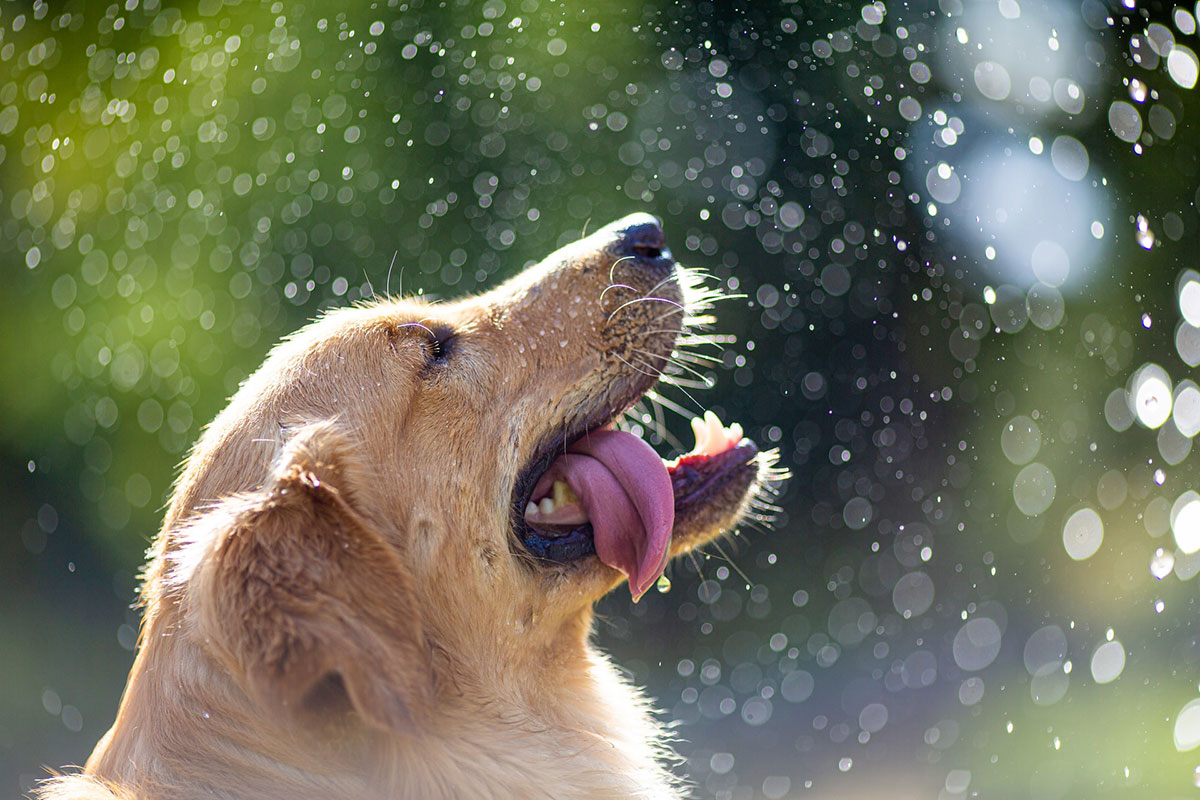Territorial barking is when your dog barks at other dogs, especially if they are in his territory or close by. It can be a sign of aggression and it’s important that you know how to deal with this behavior so that you don’t end up with an aggressive dog on your hands.
If you have a young puppy, the first thing you need to do is make sure he knows who owns him, of is his master. Puppy training and dog association (meeting new dogs every day) is critical at this young age.
If your dog is already old enough to understand basic commands, then you can start teaching him to respect other people’s property. Start by having him sit whenever someone comes into view. Obedience training can help set the right trajectory for a long fun life.
Dogs usually protect their territory and resources. If your dog shows any kind of warning signs such as excessive barking, growling or snapping, it’s definitely time for you to consider the best approach to manage the behavior.
Territorial behavior can also become downright dangerous if it turns aggressive . In these cases, you should take immediate action to prevent injury. You may want to consult with a professional trainer or behaviorist to get some guidance on what to do next.
Get back to basics
Basic obedience training for dogs lays the foundation, and basic instructions can be incredibly useful in dealing with a stressful situation. A good way to start is to teach your dog some basic commands like sit, down, lie down, come, wait and others. If your dog knows what she needs to do, she’ll be much calmer during a stressful event. Practice every day, and have a consistent routine to build on the commands.
Pet gates and crates are great tools for teaching your pet how to behave around people. They allow you to set boundaries while still giving your pet room to move about. You can even put treats inside a gate or crate to encourage your dog to go there.
Even if you’ve already been trained, a refresher will boost your confidence and help you work together. Start small, and build up slowly. Try to practice once a day, and don’t forget to reward your dog for doing well.
Dogs need training to cooperate successfully in our life.
When we think about training our pets, it seems like a simple concept: We train them because we want them to behave better. But there’s a lot more to it than that. Dogs don’t learn how to act well unless they understand why they ought to behave well. They don’t know what’s expected of them unless someone tells them. And they won’t remember anything unless they practice it over and over again.
In fact, every aspect of training involves some form of teaching, whether it’s verbal instruction, physical correction, rewards, or punishment. In short, no matter what we do, we’re always teaching something to our dog.
Recall Command
Recall, or coming when called is one of the most important things you should teach your dog, and it’s a critical skill to keep her out of mischief. If she doesn’t understand what you mean when you say “come,” she might think you are calling her to do something else entirely.
You can and should work on recalling anytime, but if your dog tends to be territorial in the house, start indoors first. Start slowly, making sure you are consistent. Then, once you feel comfortable, you can graduate to shorter distances outside. Be patient; don’t rush it.
Remember, as with all training – and particularly with a territorial dog – slow and steady wins the race.
Reduce your dog’s anxiety
Training can go a long way toward reducing your dog’s anxiety, but there are many things you can do to help him feel safe and secure in his environment. Here are five tips to consider:
1. Close the curtains. If possible, close the curtains and turn off lights to make your home less stimulating. You want to give your dog a sense of security.
2. Feed him in a quiet area. Don’t let your dog eat in the living room where people come over, especially during holiday parties. He’ll associate food with noise and stimulation. Also, don’t feed him in the kitchen where he might run into traffic.
3. Provide a comfortable bed. Make sure your dog has a cozy bed in a quiet spot. Dogs naturally seek out places that feel familiar to them, so provide a space that feels like home.
4. Keep the house clean. Cleaning helps keep your home smelling good and reduces distractions.
5. Crate train your dog. A crate is a great tool to use when traveling, allowing you to prevent your dog from getting too excited and jumping around.
Desensitize to events that create tension and stress.
Desensitizing refers to the process of decreasing the level of fear or anxiety associated with a stimulus. This technique involves exposing your pet to the trigger slowly over time while providing positive reinforcement. For example, if your dog gets anxious around fireworks, start by having him sniff a firecracker once every few weeks. If he doesn’t react negatively, increase the exposure. Eventually, you can add multiple exposures per week without causing a negative reaction.
Alarm Barking
If your dog barks whenever people are around, it could mean they’re alerting you to the presence of another animal or person. This type of barking is often called “alarm barking.” If your dog barks at the sound of car doors closing, it might be because he thinks there’s a stranger walking up behind him.
How do you know whether your dog is barking at a real threat or just being annoying? Here are some signs that it’s more than just the normal noise of life:
- Your dog gets really upset and starts growling.
- They start lunging toward the source of the noise.
- They start showing aggression toward the source of the sound.
- Their ears perk up.
- They stop eating and drinking.
It depends on what your dog barks at in the first place whether you need to eliminate the trigger. If the problem is noise, you may want to move your dog to an area with fewer people, turn off TVs, radios, or white-noise machines, or put up some soundproofing material. If they see people, cars, or other creatures outside their window, you might want to consider closing the curtains.
Anti-Bark Collars
Anti-Bark collars come in many different types and styles. Some have a shock collar attached to a leash; others are remote controlled. The most common anti-bark collar uses ultrasonic technology to emit high frequency sounds that dogs find unpleasant. When your dog barks, the collar emits a loud tone that makes them uncomfortable. It works best for dogs who bark frequently and only respond to the sound. Anti-bark collars work well for dogs who bark as a way to communicate. However, they should never be used on aggressive dogs.
Some owners report success using these devices to reduce unwanted barking. Others claim that they don’t work at all. There are no scientific studies proving that anti-bark collars actually help control barking.
Exercise Your Dog
Physical activity can be an effective way to reduce boredom. If your dog has had a good walk or run in the morning, he’s more likely to sleep through the afternoon when you’re away from him. You don’t need to limit yourself to walking your dog; there are lots of other things you can do to keep him fit. These activities may include playing fetch or hide-and seek, playing with a frisbee, or chasing a ball around your yard
Negative Punishment
Negative punishment is not something we want our dogs to learn. We want them to respect us and obey us. Punishing your dog will teach him that he has the power to dominate you. You’ll also set yourself up for future problems. Dogs who feel like they can get away with anything will eventually act out aggressively against anyone who crosses their boundaries.
Often the first strategies people try are related to punishment. There may be some severe long-term side effects of this approach including fear, increased aggression and anxiety, and a decreased occurrence of warning signs from your dog. Repeated exposure to punishment in association with approach by unfamiliar people can create an associative link between them and fear. Punishment may help prevent aggressive behavior but it will increase anxiety, fear, and the need for protection. Because the warning signs have been suppressed, the outcome is a dog that doesn’t bark but that might actually bite without displaying any aggression. An aggressive encounter is dangerous and makes the dog look unpredictable and uncontrollable. These bites actually result from training dogs to accept an approaching stranger by punishing them when they display territorial aggression. You’re better off teaching your dog what he needs to know before someone arrives.






